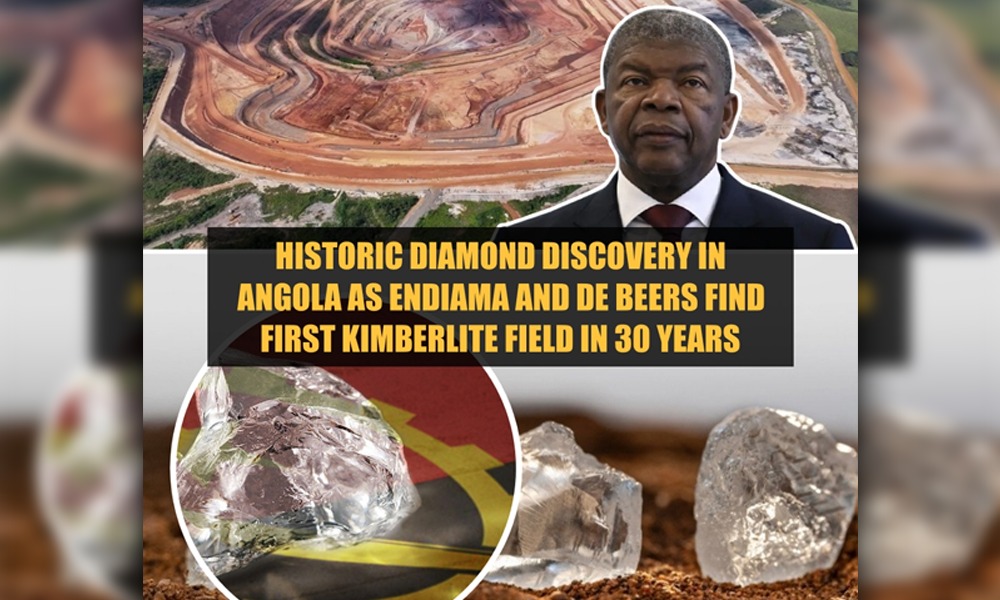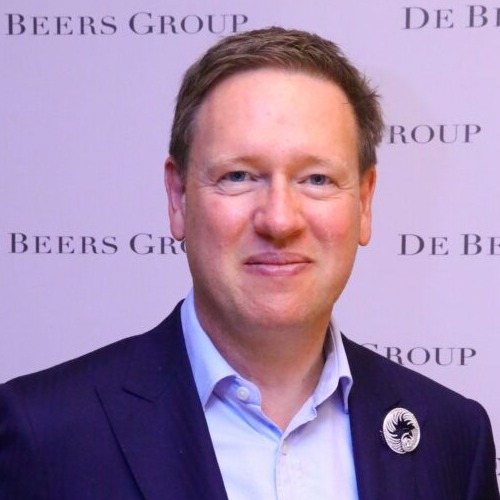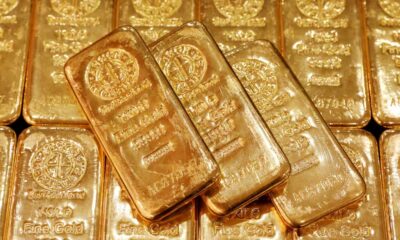DiamondBuzz
The New Diamond Dilemma: Why Advanced Certification is the Key to Industry Integrity
By Ramit Kapur, MD, Gemological Science International (GSI)

The diamond industry stands at a critical juncture. In recent years, technological advancements in diamond synthesis have reached unprecedented levels, pushing the industry into a new era where distinguishing between natural and man-made diamonds has become increasingly complex. As production scales up, the quality of these diamonds is also improving, making traditional identification methods insufficient.
This evolution brings both opportunity and challenge. While the industry has embraced innovation, it must also address a pressing concern: ensuring absolute transparency at every stage of the supply chain. The risk of undisclosed mixing has never been higher, making rigorous certification no longer just a safeguard but an absolute necessity.
The Silent Challenge of Undisclosed Mixing
Unlike the past, where visual and basic spectroscopic assessments could easily differentiate natural diamonds from their counterparts, today’s landscape demands a far more advanced approach. New-generation diamonds are engineered to exhibit characteristics nearly identical to those of natural diamonds, making detection a sophisticated scientific endeavor.
Contamination; whether accidental or deliberate, can occur at multiple points in the supply chain. From loose sorting, bagging to jewelry manufacturing, from wholesale distribution to retail, an undisclosed stone can enter at any stage. Even a single instance of an undetected mix-up can erode consumer confidence and jeopardize the credibility of a business. For retailers, the challenge is clear: without a verified certification from a reputable gemological laboratory, there is always a room for doubt of what they are purchasing.
For decades, the 4Cs; Cut, Color, Clarity, and Carat weight, were the industry’s gold standard for determining a diamond’s value. However, while these parameters still hold fundamental importance, they do not address the crucial question of authenticity of the nature of origin. In an environment where sophisticated processes are used to create diamonds that look, feel, and test like natural stones under conventional methods, reliance on legacy techniques and stereotypical thought processes is no longer sufficient.

Labs Beyond Traditional Grading:
This is where gemological laboratories play a decisive role. A laboratory’s function today goes far beyond grading; it is about continuous research, technological innovation, and investment in cutting-edge detection capabilities. The methods that were effective yesterday will not be enough tomorrow. Laboratories must remain ahead of the curve, upgrading methodologies, instruments, and expertise in real-time.
The Need for Constant Evolution in Laboratory Science
At GSI, we recognize that the industry’s ability to maintain transparency hinges on the gemological community’s ability to evolve. As detection challenges grow, so do our efforts to stay ahead.
Investing in state-of-the-art instrumentation is not a one-time effort; it is an ongoing commitment. New techniques demand new solutions, and old detection methods quickly become obsolete. As the industry progresses, our labs must not only adopt the latest technologies but also develop pioneering research to stay one step ahead.
This is why at GSI, our facilities are equipped with the world’s most sophisticated diamond detection instruments, designed to analyze, verify, and certify with absolute precision. We work closely with industry partners, scientific research institutions, and technology developers to ensure that we are at the forefront of gemological advancements.
Retailers: The First Line of Consumer Protection
For retailers, advanced certification is more than a formality; it is a responsibility. Consumer trust is fragile, and in an age where buyers are more informed than ever, transparency is non-negotiable. A diamond with an undisclosed identity can severely impact business credibility, making independent verification through a trusted laboratory indispensable.
Here’s why comprehensive certification is essential for every retailer:
- Absolute Authenticity: Ensures diamonds are precisely what they are represented to be, eliminating any risk of misrepresentation and contamination.
- Regulatory Adherence: With global authorities tightening disclosure norms, compliance is no longer optional.
- Consumer Confidence: Buyers rely on retailers for assurance; a certified diamond reinforces their trust in the purchase.
- Industry Integrity: Prevents undisclosed mixing, preserving the credibility of businesses and the market at large.
The diamond industry is built on trust. As innovations in diamond production continue to advance, the need for transparency will only intensify. The responsibility to uphold this integrity does not rest with laboratories alone: retailers, wholesalers, and manufacturers must collectively prioritize certification as a fundamental business practice.
At GSI, we are committed to supporting the industry through scientific precision, technological advancement, and a dedication to detection excellence. Our goal is simple: to ensure that every diamond reaching a consumer is exactly what it claims to be.
For retailers, the message is clear: certification is not just a step in the process; it is the foundation of a credible and successful business. Ensuring that every piece of jewelry is independently verified is not just about safeguarding transactions; it is about safeguarding trust, the most valuable asset in the diamond industry.

DiamondBuzz
De Beers, Endiama report first new kimberlite field in over 30 years in Angola
De Beers Group, in partnership with Angola’s Endiama, has discovered a new kimberlite field—its first in over 30 years—during initial drilling in July 2025. The find marks a major milestone in their long-term collaboration to responsibly develop Angola’s diamond resources.

De Beers Group, in partnership with Angola’s national diamond company Endiama, has reported the discovery of a new kimberlite field in Angola—the company’s first such find in over 30 years.The breakthrough occurred in July 2025, when the joint venture intersected kimberlite in its very first drill hole, targeting a cluster of high-priority sites identified through airborne surveys earlier in March 2025.
In the months ahead, De Beers and Endiama will carry out additional drilling, ground geophysical studies, and laboratory testing to confirm the nature of the kimberlite and evaluate its diamond-bearing potential.The find marks a significant milestone in the partnership between De Beers and Angola. It comes on the back of two Mineral Investment Contracts signed in April 2022 and a Memorandum of Understanding agreed at the 2024 Mining Indaba. These agreements have laid the foundation for a long-term collaboration focused on responsibly developing Angola’s diamond resources.

Al Cook, CEO of De Beers Group, said: “Angola is, in our view, one of the best places on the planet to look for diamonds, and this discovery reinforces our confidence. It is a powerful reminder of what can be achieved through partnership, and I commend President Lourenco and his government for all the work they have done to enhance transparency, adopt international best practices, and create a business friendly environment, all of which has enabled us to return to Angola and seek new sources of supply. We are excited about the role De Beers can play in helping the country deliver on its huge potential, both below and above the ground.”
DiamondBuzz
BlueStone Jewellery Rs 1,541 crore IPO subscribed 66%
BlueStone Jewellery and Lifestyle’s ₹1,541 crore IPO has reached 66% subscription on the final bidding day, with QIBs leading at 85% of their allotted quota.

BlueStone Jewellery and Lifestyle’s Rs 1,541 crore IPO has been subscribed 66% overall as per the latest update on the third and final day of bidding. Among investor segments, Qualified Institutional Buyers (QIBs) have shown relatively stronger interest, having subscribed to 85% of their allotted portion.
BlueStone plans to raise up to Rs 1,541 crore via its IPO, comprising a fresh equity issue of Rs 820 crore and an OFS of 1.39 crore shares by existing investors, including Accel India III, Saama Capital II, Kalaari Capital, Iron Pillar, and Sunil Kant Munjal.
Ahead of the IPO launch, BlueStone secured Rs 693 crore from anchor investors. In the grey market, the response to the issue has been lukewarm, with the IPO trading at a modest premium of just 0.4% over its issue price of Rs 517 per share.
The latest Grey Market Premium (GMP) for BlueStone Jewellery’s IPO is hovering between Rs 2-4 above the issue price of Rs 517 per share. This points to a potential listing price of around Rs 520, implying a modest estimated gain of about 0.4% per share.
DiamondBuzz
Alrosa Revenue Drops 25% Amid Sanctions and Inflation, Despite Profit Bump from Asset Sale
Order for lab-grown polished diamonds to be executed in 3 months; company strengthens foothold in Far East market

Russian diamond giant Alrosa reported a 25% drop in revenue for the first half of 2025, citing geopolitical tensions, global sanctions, and macroeconomic headwinds such as high interest rates and inflation as key factors behind weakening demand and rising costs.
Revenue for the January–June period fell to 134.3 billion roubles, while core earnings (EBITDA) dropped 42% to 37.1 billion roubles, the company said on Tuesday. The state-backed miner noted that elevated borrowing costs, inflationary pressures, and higher taxes continue to erode profitability.
Alrosa, which has been under U.S. sanctions since 2022, is grappling with increasing isolation in global markets. In January 2024, G7 countries imposed a direct ban on Russian diamond imports, followed by additional restrictions on Russia-origin diamonds routed through third countries—a move also backed by the European Union.
Despite these challenges, Alrosa posted a 10.8% year-on-year rise in net profit to 40.6 billion roubles ($506.7 million) for H1 2025, buoyed largely by a one-time gain from the sale of its 41% stake in Angola’s Catoca diamond mine. The deal, finalised in May 2025, transferred Alrosa’s stake to a subsidiary of Oman’s sovereign wealth fund, amid pressure on Angola to cut ties with Russian entities due to ongoing Western sanctions.
The sale brought in 15.9 billion roubles, helping partially offset the operational downturn. Prior to the deal, Catoca was jointly owned by Alrosa and Angola’s national diamond company, Endiama EP.
Meanwhile, Alrosa’s net debt soared nearly tenfold to 61 billion roubles, although its liquidity position remained stable, with cash, equivalents, and bank deposits rising 8.4% to 115.4 billion roubles.
“The relatively high level of the key rate and inflation continued to have an additional negative impact on the group in the first half of 2025,” the company stated, highlighting rising fuel and material costs.
Russia’s central bank recently began easing monetary policy, cutting the key interest rate from 20% to 18% in late July, offering some hope for relief in the second half of the year.
Alrosa remains the world’s largest producer of rough diamonds by volume, but faces ongoing hurdles in maintaining global market access amid increasing geopolitical friction.
-

 New Premises2 months ago
New Premises2 months agoMalabar Gold & Diamonds Inaugurates Landmark Integrated Manufacturing Site in Hyderabad, Cementing Its Position as a Global Manufacturing Leader
-

 National News3 months ago
National News3 months agoEmmadi Silver Jewellery Launches First Karnataka Store with Grand Opening in Bengaluru’s Malleshwaram
-

 BrandBuzz4 months ago
BrandBuzz4 months agoMia by Tanishq Unveils ‘Fiora’ Collection This Akshaya Tritiya: A Celebration of Nature’s Blossoms and New Beginnings
-

 GlamBuzz3 months ago
GlamBuzz3 months agoGokulam Signature Jewels Debuts in Hyderabad with Glamorous Launch at KPHB












